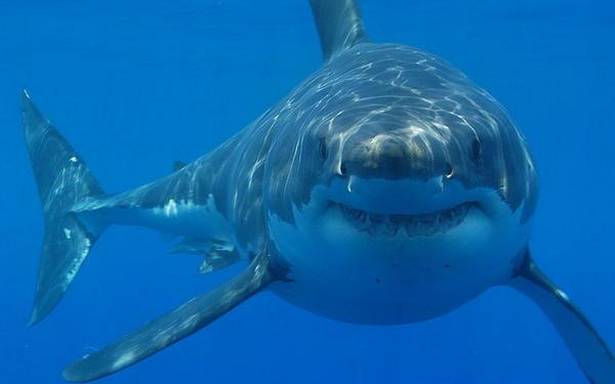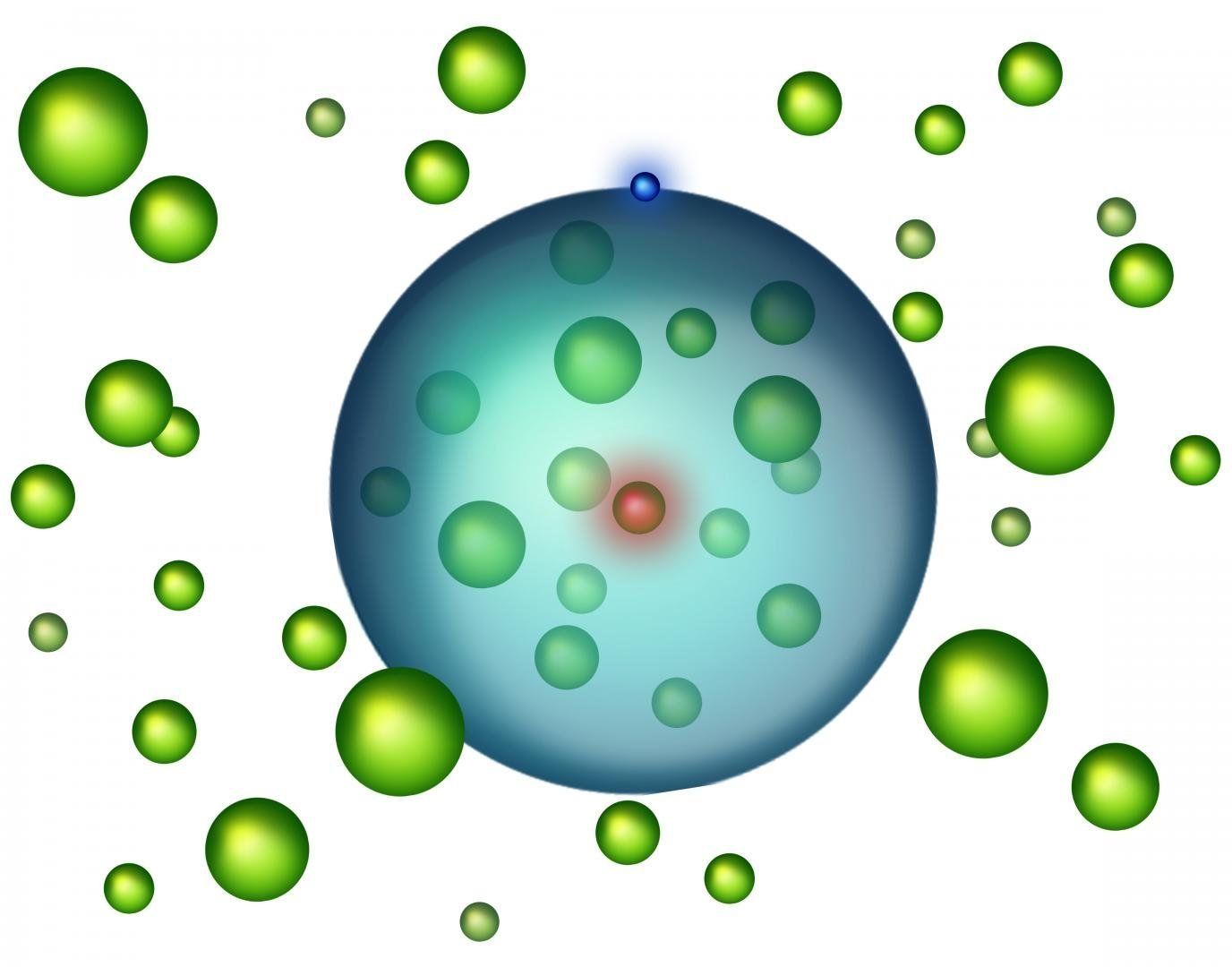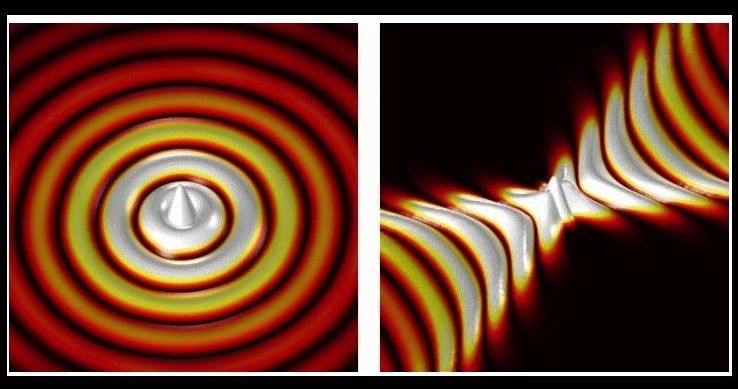Page 9958
Feb 26, 2018
Image: Hubble finds the calm after the galactic storm
Posted by Genevieve Klien in categories: life extension, space
The NASA/ESA Hubble Space Telescope caught sight of a soft, diffuse-looking galaxy that is probably the aftermath of a long-ago galactic collision. Two spiral galaxies, each perhaps much like the Milky Way, swirled together for millions of years.
In such mergers, the original galaxies are often stretched and pulled apart as they wrap around a common center of gravity. After a few back-and-forths, this starry tempest settles down into a new, round object. The now subdued celestial body, cataloged as SDSS J162702.56+432833.9, is technically known as an elliptical galaxy.
When galaxies collide—a common event in the universe—a fresh burst of star formation typically takes place as gas clouds mash together. At this point, the galaxy has a blue hue, but the color does not mean it is cold: it is a result of the intense heat of newly formed blue–white stars. Those stars do not last long, and after a few billion years the reddish hues of aging, smaller stars dominate an elliptical galaxy’s spectrum. Hubble has helped astronomers learn of this sequence by observing galaxy mergers at all stages of the process.
Feb 26, 2018
New shark species found in Atlantic Ocean
Posted by Genevieve Klien in category: genetics
The “Atlantic sixgill shark”, is different than its counterparts in the Indian and Pacific Oceans.
: A team of scientists has identified a new shark species residing in the Atlantic Ocean.
Using genetic testing, the study confirmed that the new species, named the “Atlantic sixgill shark”, is different than its counterparts in the Indian and Pacific Oceans.
Continue reading “New shark species found in Atlantic Ocean” »
Feb 26, 2018
3D-printed live bacteria creates world’s first ‘living tattoo’
Posted by Shane Hinshaw in category: 3D printing
Feb 26, 2018
Researchers report the creation of Rydberg polarons in a Bose gas
Posted by Genevieve Klien in category: particle physics
What is inside an atom between the nucleus and the electron? Usually there is nothing, but why could there not be other particles too? If the electron orbits the nucleus at a great distance, there is plenty of space in between for other atoms. A “giant atom” could be created, filled with ordinary atoms. All these atoms form a weak bond, creating a new, exotic state of matter at cold temperatures, referred to as Rydberg polarons.
A team of researchers has now presented this state of matter in the journal Physical Review Letters. The theoretical work was done at TU Wien (Vienna) and Harvard University, the experiment was performed at Rice University in Houston (Texas).
Two special fields of atomic physics, which can only be studied in extreme conditions, have been combined in this research project: Bose-Einstein condensates and Rydberg atoms. A Bose-Einstein condensate is a state of matter created by atoms at ultracold temperatures, close to absolute zero. Rydberg atoms are those in which one single electron is lifted into a highly excited state and orbits the nucleus at a very large distance.
Feb 26, 2018
SpaceX’s biggest rival has a ‘genius’ plan to cut its rocket launch costs more than 70%
Posted by Genevieve Klien in category: space travel
United Launch Alliance’s upcoming Vulcan rocket will parachute its giant engines back to Earth for reuse, lowering launch costs to $100 million per mission.
Feb 26, 2018
Canon’s newest mirrorless camera shoots 4K video
Posted by Genevieve Klien in category: electronics
The new $779 M50 is similar to the M5, but it’s got a new image processor, new RAW file format, a swivel screen, and more.
Feb 26, 2018
Scientists successfully inverted the circularly propagating optical waves
Posted by Genevieve Klien in category: materials
A new study has revealed that the optical waves or light waves can be turned upside down when they are allowed to propagate through specifically structured surfaces. Normally what happens is that the optical waves emerging out from a point source propagate circularly. That means the optical waves traveling away from a point source characteristically display circular, or convex, wavefronts.
The scientists compared these circular wavefronts to the waves seen on the water surface when a stone is dropped into the water. But the latest study revealed that these circularly propagating light waves’ wavefronts can be turned upside down with the help of a special surface. They developed a new material having a hyperbolic metasurface and successfully inverted the optical waves.
The study was led by Peining Li, an EU Marie Sklodowska-Curie fellow at nanoGUNE. According to him, the reason behind this circular propagation of optical waves is because of the fact that the medium through which light waves propagate is isotropic and homogenous. If the waves are isotropic in nature then their propagation is uniform in all direction and being homogenous means they carry the same characteristics throughout the propagation. But these optical waves can be inverted using specifically structured surfaces like the hyperbolic metasurfaces.
Continue reading “Scientists successfully inverted the circularly propagating optical waves” »
Feb 26, 2018
Deep learning for biology
Posted by Derick Lee in categories: biotech/medical, information science, mobile phones, robotics/AI
Finkbeiner’s success highlights how deep learning, one of the most promising branches of artificial intelligence (AI), is making inroads in biology. The algorithms are already infiltrating modern life in smartphones, smart speakers and self-driving cars. In biology, deep-learning algorithms dive into data in ways that humans can’t, detecting features that might otherwise be impossible to catch. Researchers are using the algorithms to classify cellular images, make genomic connections, advance drug discovery and even find links across different data types, from genomics and imaging to electronic medical records.
A popular artificial-intelligence method provides a powerful tool for surveying and classifying biological data. But for the uninitiated, the technology poses significant difficulties.


















